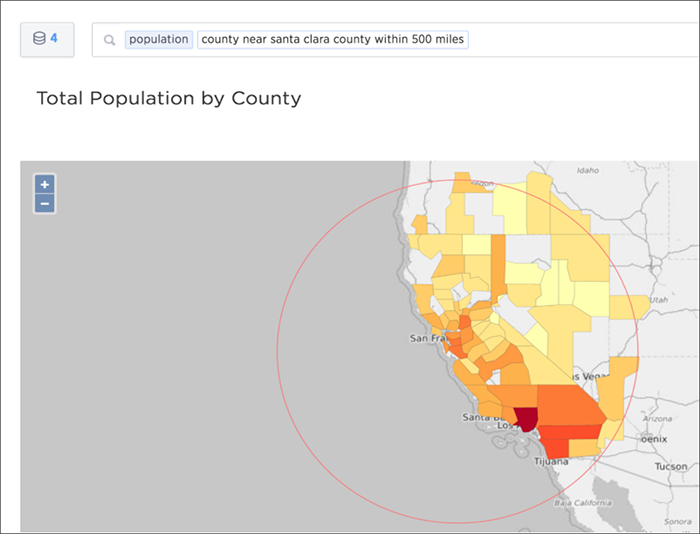Proximity keywords allow you to search search and then show on map (via search) all instances of a measure near an attribute’s associated lat/long coordinates within x miles/km/meters. Using proximity keywords causes ThoughtSpot to display a circle that represents your set distance on the geo charts when you filter on a GeoType column.

The proximity keywords are.
nearnear…within n miles|km|metersfarther than n miles|km|meters from
The distance is calculated as a straight-line distance (not road distance) radius using miles, kilometers, or meters from the central point. If not specified, the default is 10 km.
These keywords are limited to 33 latitude/longitude pairs. They work on duplicate counties. Finally, you can filter on them. Some examples of valid searches are:
landings latitude longitude city near tokyo
landings latitude longitude city near tokyo within 50 miles
You can bracket your search only with actual values found in the data. So
“longitude between -125.000000 and -115.316670 worked for me, but not
longitude between -125 and -115.
Proximity search configuration requirements
All your data must be in the same set. The worksheet or one of the tables must
contain a column of type longitude and a column of type latitude. The
latitude and longitude data have to be on the same base tables for the feature
to work. You can’t, for instance, have a dimension table with all your cities
and their associated geo coordinates and join to it from your fact table and
expect proximity search to work.
Also, your administrators must have configured these columns using the appropriate GeoType.